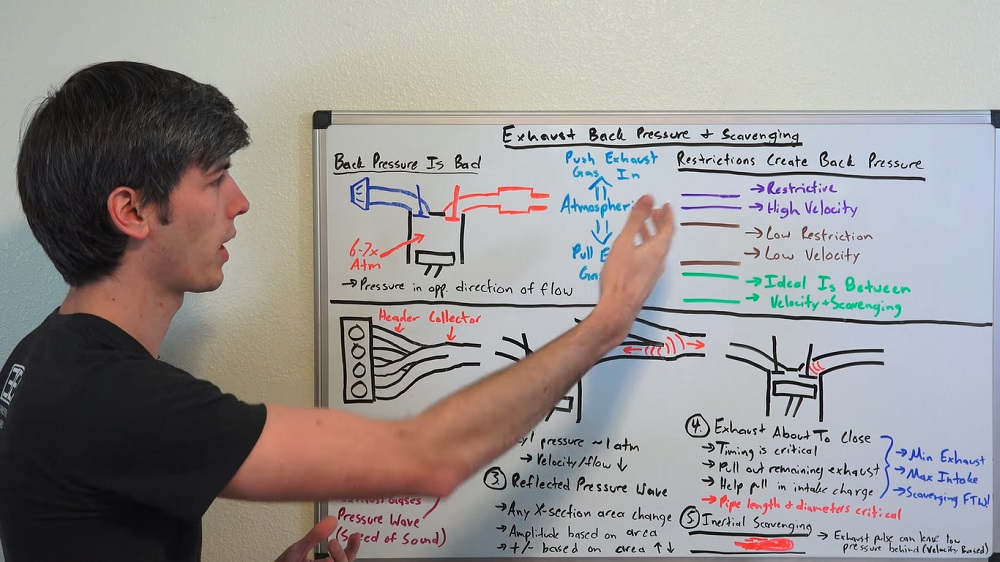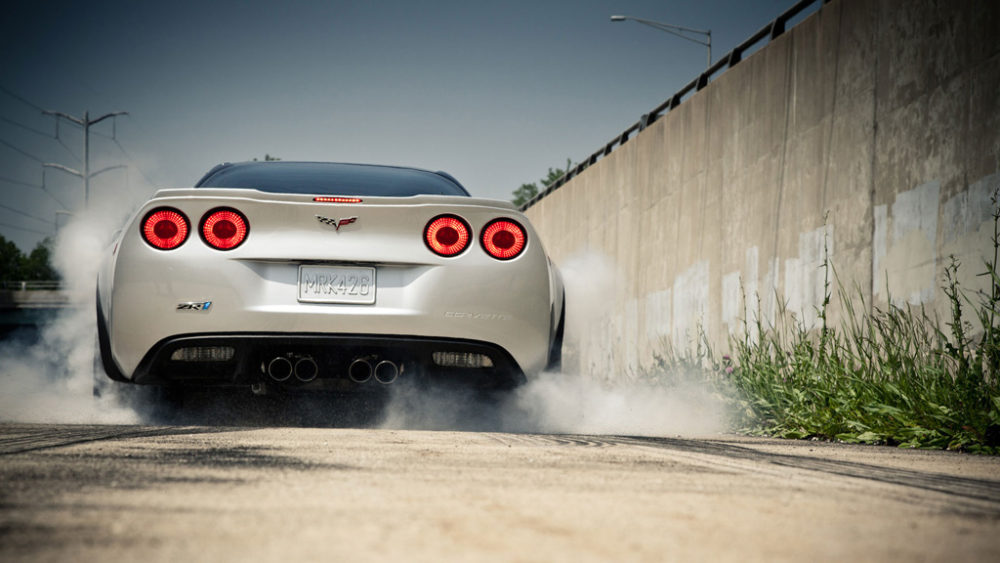Does Your Corvette Need Exhaust Back-Pressure?
People throw around the term a lot. Engineering Explained takes a few minutes to deconstruct it, and how it fits into performance tuning.
If you’ve ever heard someone say “You need back pressure for an exhaust system,” they’re right. Kind of. However, as Jason Fenske of Engineering Explained details in this video, it’s not a simple relationship. In reality, you need the right amount of back pressure, while too much or too little can hinder performance.

“Why do some people say you have to have back pressure?” Fenske asks. “Well, it’s kind of misleading and it has to do with velocity.”
As he explains, diameter and length of exhaust tubing make a world of difference. If the pipe is too small, the spent gas trying to leave the engine’s combustion chamber creates back pressure due to high velocity. Too small a pipe means low velocity without the ability to push spent gases from the cylinder.
The key to the right amount of back pressure relates to having the right pipe size and also good engine timing. The movement from an exhaust manifold or header into the collector creates a little reflective back pressure as a wave. In a well-designed system, that pressure wave reaches the combustion chamber as the exhaust valve is closing.
“What you want to happen is for that negative pressure wave to come back at the exact right time,” Fenske says. “You want to time it so that just before that exhaust valve closes, your intake valve opens. That negative pressure arrives and helps lower the pressure in [the combustion chamber], pulling out the remaining exhaust gases.”
ALSO SEE: New Spy Shots Offer Clearest Look Yet at New Mid-Engine Corvette
With the combustion chamber empty, that means more fuel-air mixture in the cylinder and more power. This works better at some RPM than others, so some tuning is usually required to make an exhaust system work ideally.
That kind of research and tuning might explain, at least a little, why aftermarket exhaust systems can cost serious cash. The companies have typically put in the time and effort to design and then adjust elements of the system to improve scavenging, even if the power gains are minimal.
Fenske sums up the juggling of those components nicely: “There’s a sweet spot where you have the perfect amount of scavenging from both wave scavenging and inertial scavenging where the piping diameter and length are both very critical for your engine.”
Join the Corvette Forums now — FREE!

